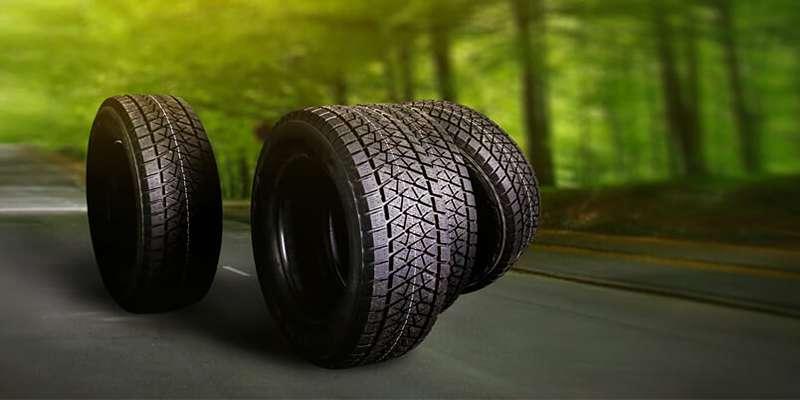Choosing the Right Tires for Every Season
Choosing the right tires for your vehicle is more important than many people realize. But it can be challenging to determine which type is the best fit for your needs. This article will explain the differences between these three tire types, helping you make an informed choice based on your driving environment and habits.
What Are Summer Tires?

Summer tires are specifically designed for warm weather conditions. They are made with a special rubber compound that offers excellent grip on both dry and wet roads during summer months. These tires perform best when temperatures are consistently above 45F (7C).
Benefits of Summer Tires
- Superior handling in dry and wet conditions
- Shorter stopping distances compared to other tires
- Excellent grip for sporty driving
However, summer tires are not suitable for winter conditions as they harden in cold temperatures, which reduces their grip and safety.
When to Use Summer Tires?
If you live in a region with hot summers and mild winters, summer tires might be the ideal choice. They are designed to provide optimal performance in warm weather, making them perfect for spirited driving on highways and city streets. But remember to switch them out when winter arrives.
What Are All-Season Tires?
All-season tires are designed to provide adequate performance in a variety of weather conditions, including rain, light snow, and moderate temperatures. They combine features of both summer tires and winter tires, offering a balanced performance in most climates. However, they dont excel in extreme conditions.
Benefits of All-Season Tires
- Versatility for year-round use
- Eliminate the need to switch tires each season
- Longer tread life than summer tires or winter tires
When to Use All-Season Tires?
All-season tires are a great option if you live in an area with moderate climates and only occasional snow. They offer the convenience of not needing to switch tires, but its important to note that all-season tires may not perform as well as winter tires in extreme cold or summer tires in very hot weather.
What Are Winter Tires?
Winter tires (also known as snow tires) are specifically designed for cold, snowy, and icy conditions. These tires use a softer rubber compound, allowing them to remain flexible in freezing temperatures. They also have deeper treads and unique patterns that help channel snow and slush away from the tire surface for better grip.
Benefits of Winter Tires
- Enhanced traction on snow, ice, and slush
- Superior braking performance in cold conditions
- Can handle extreme winter temperatures
However, using winter tires in warmer weather can wear them out faster and negatively affect performance.
When to Use Winter Tires?
If you live in an area that experiences cold winters with frequent snow and ice, winter tires are essential for safety and performance. Even if you have all-season tires, switching to winter tires during the colder months can make a significant difference in how your vehicle handles slippery roads.
How to Choose the Right Tires?
Here is how to choose the right tires:
Assess Your Climate
The first step in choosing the right tires is to assess your local climate. If you live in a place where winters are cold and snowy, winter tires are a must. If you live in an area with hot summers and mild winters, summer tires will give you the best performance. For regions with mild, moderate climates, all-season tires offer a balanced solution.
Consider Your Driving Habits
Your driving habits also play a role in tire selection. If you enjoy performance driving or take frequent road trips in the summer, summer tires provide the handling and grip you need. If you mostly drive in urban environments with moderate weather, all-season tires might be more convenient. For winter driving or frequent mountain trips, winter tires are a safer choice.
Check Your Vehicles Requirements
Some vehicles, especially performance cars, come with manufacturer recommendations for certain types of tires. Always consult your vehicle's manual or speak to a tire expert to ensure you are using tires that meet your vehicles specifications. Some vehicles may require specialized tires for optimal performance.
Maintenance Tips for Tire Longevity

Regardless of the type of tire you choose, proper maintenance is key to ensuring they last as long as possible.
Rotate Your Tires Regularly
Tires wear unevenly depending on your driving habits, vehicle weight distribution, and alignment. Rotating your tires every 5,000 to 8,000 miles helps distribute wear evenly, extending their lifespan.
Check Tire Pressure
Proper tire pressure is crucial for safety and performance. Underinflated tires can cause poor handling and increased fuel consumption, while overinflated tires can lead to premature wear. Make sure to check your tire pressure at least once a month.
Monitor Tread Depth
Tread depth is a good indicator of when its time to replace your tires. Most tires have tread wear indicators built in. If your tread is worn down to 2/32 of an inch, its time to invest in new tires.
Conclusion
Choosing the right tires is essential for safety, comfort, and vehicle performance. Whether you opt for summer tires, all-season tires, or winter tires depends largely on the climate you live in and your driving habits. Understanding the key differences between each tire type can help you make an informed decision and ensure that you are well-prepared for whatever the road throws at you.












